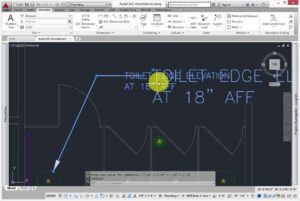Utilizing AutoCAD in conjunction with cloud storage to provide improved collaboration

Utilizing AutoCAD in conjunction with cloud storage to provide improved collaboration
Collaboration is not only a desirable feature in the fast-paced design world of today; rather, it is an essential component. When you are working with coworkers in the same office or collaborating across continents, it is essential to ensure that everyone is on the same page (and using the same version of the file). This may be the difference between a project that goes well and one that gives you a lot of frustration.
It is precisely in this context that the integration of AutoCAD with cloud storage shines. Rather of depending on traditional methods such as file transfers, USB drives, or interminable email chains, cloud integration provides a method that is both frictionless and adaptable for sharing work, monitoring changes, and working together in real time.
The following is an explanation of how it works, why it is significant, and how it may make your design process seem lighter, quicker, and far less stressful.
How Come AutoCAD Files Should Be Moved to the Cloud?
The drawings that are created in AutoCAD (DWG files) may be rather extensive, comprehensive, and constantly updated. In the past, managing them meant dealing with a jumble of “final,” “final-final,” and “final-v2” versions that were stored on local disks or shared servers. With each modification, there was a possibility of overwriting the work of another individual, and locating the most recent version may become its own endeavor.
This situation is reversed by cloud storage:
- All of your data are stored in a safe and centralized place.
- Syncing updates automatically ensures that everyone is seeing the most recent version.
- No matter where you are—at home, at the office, or on-site—you have access to the application.
- The built-in sharing feature makes it simpler to get approvals or input in a timely manner.
- If I may put it another way, the cloud enables your team to concentrate on developing rather than managing files.
How the AutoCAD Software Is Linked to the Cloud
The most recent version of AutoCAD makes cloud integration less complicated. How it may really play out in practice is as follows:
- When you save your DWG, you have the option of selecting cloud storage providers such as OneDrive, Google Drive, Dropbox, or Autodesk’s own cloud service. This allows you to save your information straight to the cloud.
- These AutoCAD Web & Mobile applications allow you to see, modify, and comment on your drawings immediately from a computer or mobile device. They are ideal for field trips or rapid inspections since they allow you to instantly access your drawings.
- Xrefs and data management: Data management and linked files, references, and supporting documents may also be stored in the cloud, which helps to reduce mistakes caused by missing files and maintains the organization of your project.
What is the end result? You can take your design data with you, and it will always be up to date and ready to be shared.
There is now the possibility of real-time collaboration.
Working together is a completely different experience once your data are stored on the cloud:
- Without having to wait for their time, other members of the team may access and even update the content.
- Stakeholders have the ability to directly add comments or markup across the file.
- The fact that everyone is working on the same live document eliminates the need to worry about who has the “latest version.”
- In situations involving big teams or projects that include external consultants, this real-time method ensures that talks continue to go ahead rather than stopping over the mechanics of file management.
On and off the job site, increasing productivity is a priority.
Imagine this: you are present at the location and you notice a modification that has to be implemented right away. As an alternative to going back to the workplace, you might be able to:
- To see the drawing, open it on your mobile device or tablet.
- Directly on AutoCAD mobile, you may review or make adjustments.
- It is possible to save modifications immediately to the cloud, where they will be immediately visible to the office team.
- As a result of this flexibility, delays are reduced, expensive errors are avoided, and the timeframe for your project remains on track.
Confidence and safety are guaranteed.
It is not necessary to compromise on security in order to save data on the cloud. Several cloud service providers, in point of fact, provide powerful encryption, version history, and backup systems that safeguard your data more effectively than is possible with local storage alone.
Moreover, you have the ability to simply limit access, which allows you to share files with just those individuals who need them and to revoke access when it is required.
Advice on How to Get Started in the Real World
Find the perfect cloud service for your needs: You should think about the tools that your team already utilizes and the software that interacts well with AutoCAD.
- In order to minimize misunderstanding later on, it is important to establish directories and permissions as early as possible.
- Instruct your group in: Educate everyone on how to save, share, and comment on content that is stored in the cloud space.
- Maintain naming standards that are consistent: Maintaining clarity in file name makes it simpler to collaborate, even when using cloud storage.
Remarks to Conclude
The integration of AutoCAD with cloud storage is not only an improvement in technology; rather, it is a movement in mentality. Collaboration is transformed from something that occurs in a series of sluggish, laborious stages into a live process that maintains everyone’s connection to one another, fosters creativity, and propels forward progress.
Because your team will have greater flexibility, speed, and confidence as a result of adopting cloud computing, you will be able to spend less time searching for files and more time building something really remarkable.







